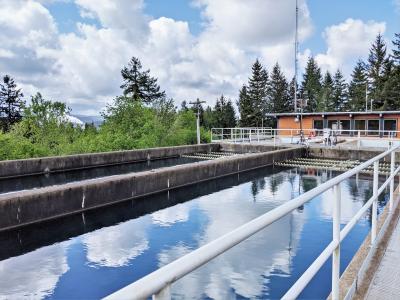Water Utility
The City of Toledo owns and operates a water system with in-service components dating back to the 1930’s. The City provides water to residential, commercial, and industrial customers within the 2630- acre Urban Growth Boundary (UGB) and is a wholesale supplier of treated water to the Seal Rock Water District. The City is defined as a “wholesale system” and the District defined as the “purchasing water system” per OAR 333-061-0020.
The sources of raw water supply for the City are the Siletz River and Mill Creek. Water Rights held by the City on the Siletz River date back to 1929; Water Rights held by the City on Mill Creek date back to 1911. Mill Creek includes a dam built approximately 1965 with a reservoir providing 250 acre-feet of storage. Due to seasonal variations in water quality, Mill Creek is used in winter months when turbidity in the Siletz is high, and the Siletz is used in summer when algae blooms degrade Mill Creek water quality and its flows are inadequate for the summer demand. Stream flows in Mill Creek drop low enough during summer periods that even with the storage behind the dam; it is unlikely that Mill Creek alone could supply the entire system for prolonged periods in the summer.
The Toledo Water Treatment Plant is in good condition and the major components have sufficient capacity for the next twenty (20) years. The 1976 plant is a conventional treatment plant consisting of chemical addition, rapid mix, dual-stage flocculation, sedimentation, and mixed-media gravity filtration. Instrumentation and controls improvements were constructed in 1999 along with the installation of new filter media. Current flows through the plant range from 800 to 1300 gallons per minute (gpm).
The City has 1.4 million gallons (MG) of treated water storage provided by two steel storage tanks. The City’s water piping system consists of over 35 miles of piping with 33% of the total being raw water piping. The system is separated into three pressure zones including the main intermediate pressure zone (hydraulic grade of 300 feet) controlled by the water surface in the plant clear-well and Ammon Road Tank, the low level pressure zone (hydraulic grade of 240 feet) controlled by the water surface in the Graham Street Tank, and the high level pressure zone (hydraulic grade of 435 feet) controlled by the Wagon Road Booster Pump Station.

